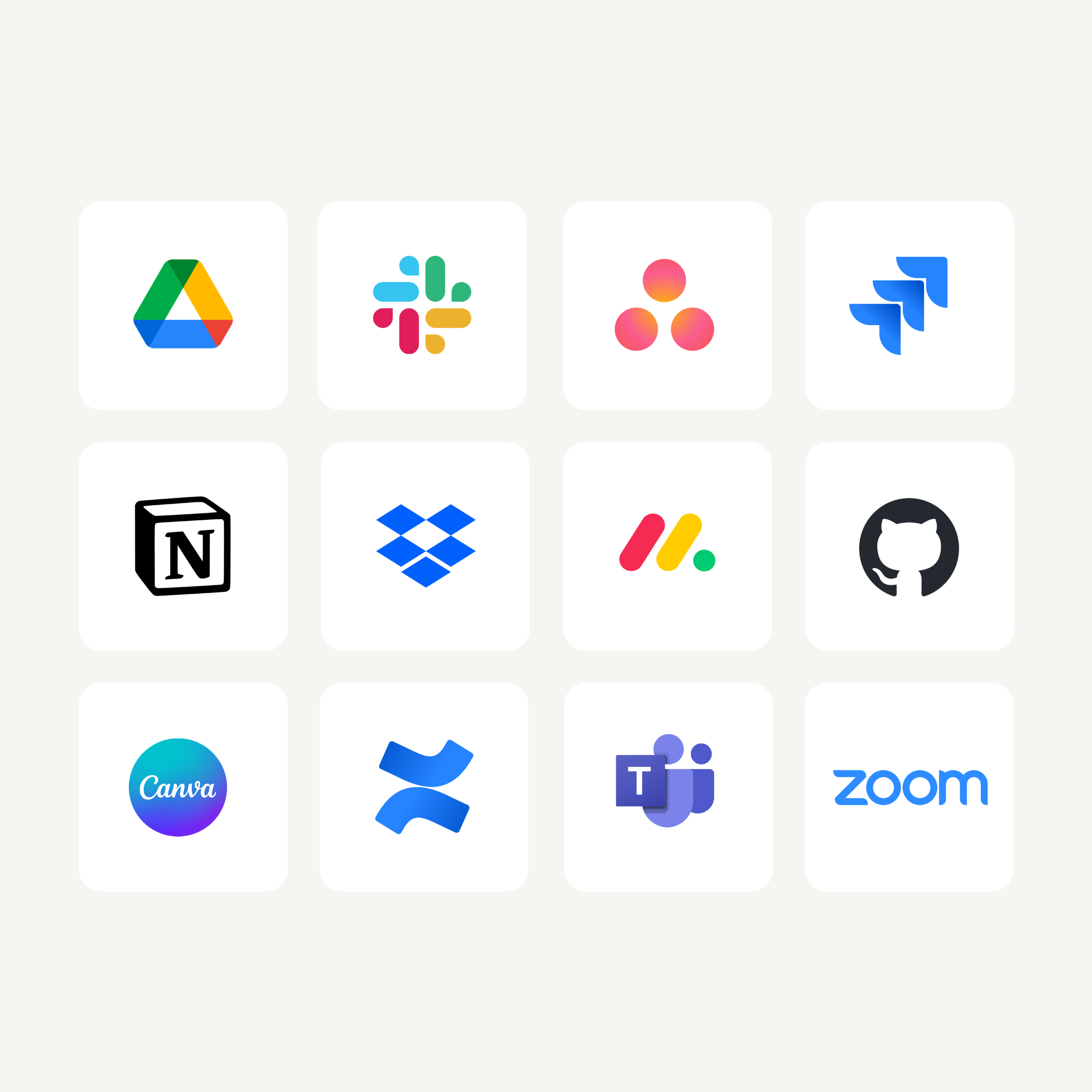
Context-aware search adjusts results based on your work, not just keywords.
Most search tools treat every query the same way. Type a few words, get a list of files that match—some relevant, most not. But during work, your needs change—what’s right for one might be totally irrelevant to another.
Context-aware search avoids fixating on keywords, it learns from the way you work—what projects you’re part of, which files you reference most, and who you collaborate with—to tailor results that make sense in the moment.
Imagine asking, “Where’s the latest launch plan?” and instantly seeing the deck your team updated this morning—not outdated versions from last quarter. With tools like Dropbox Dash, context-aware search becomes a shortcut to focus—surfacing what matters and helping you move forward.
What we mean by “context-aware search”
Context-aware search is a system that uses your current context—past activity, file relationships, permissions, project connections—to refine results beyond simple keyword matching.
Context-aware search does the following to build efficiency into your daily routine:
- Understands your workflow—it knows which projects or campaigns you’re focused on right now
- Remembers what matters—it prioritizes files you’ve opened, edited, or shared recently
- Connects the dots—it recognizes related decks, docs, and messages across your tools
- Respects boundaries—it surfaces only what you’re authorized to access, keeping results secure
- Adapts over time—it learns from patterns, so every search gets smarter and more personal
Unlike plain full-text search, context-aware search surfaces content that’s relevant in your situation—helping you find what you need, not just what you typed.

The components that power context-aware search
Behind every great search experience is a web of smart systems quietly working together. Context-aware search is built on layers of intelligence that learn from your behavior. Each layer makes search feel like a reliable teammate that understands what you’re trying to do.
Here’s how the pieces fit together:
Context modeling
This involves capturing signals like user history, role, document relationships, folder structure, and project metadata to shape how a query is interpreted. In practice, it means your search results reflect not just what you asked for, but how you actually work—turning intent into precision.
Session continuity and query rewriting
Systems track query sequences and reframe short or ambiguous queries by using earlier context in the session. For example, in online shopping, research has shown that adding past searches improves query accuracy by over 11.6% in Mean Reciprocal Rank metrics. By remembering what came before, the system connects the dots between your thoughts—delivering answers that evolve with your search.
Re-ranking and blending
After an initial result set, results are re-ranked using context priors (e.g. recent files, permissions, and project relevance). Hybrid techniques can also blend full-text, vector embeddings, and context scores. This step ensures the most meaningful results rise to the top—so what you need isn’t buried under what you’ve already seen.
Context-aware weighting
Some models dynamically adjust term weights depending on surrounding content or passage-level context. A notable approach is HDCT (a context-aware document term weighting), which improves retrieval accuracy over classical and embedding-based indexes. See research from the CMU School of Computer Science for more details on how weighting works.
Together, these components combine to make search smarter, faster, and more human. They help universal search features available in tools like Dash to go beyond matching words to truly understand meaning. The result is that you can start surfacing results that feel intuitive and much more tailored to your work goals.
Why basic keyword search still falls short
Keyword search treats terms equally. It doesn’t distinguish between different meanings of the same word in different contexts. That’s why traditional search often stumbles in the following areas:
- No sense of intent—it can’t tell whether the word “launch” refers to a product, a campaign, or a rocket
- Blind to context—it ignores the project you’re working on or who shared the file
- One-dimensional results—it matches words literally, even when the meaning is miles off
- Version confusion—it surfaces every draft ever made and doesn’t know which one is final
- No learning curve—it doesn’t improve with use, so every search starts from zero
It also ignores how a file is related to your current work. As a result, it can surface documents that match the words but are irrelevant to your task.
How context-aware search benefits teams
When teams can find what they need without friction, everything else starts moving faster.
Context-aware search turns information overload into insight—helping people stay focused and confident in the decisions they make. It finds files, but it also connects the dots across projects, conversations, and collaborators.
Here’s what that means in practice:
- Fewer dead ends—less time filtering through irrelevant results
- Faster decision-making—context helps surface the most actionable documents
- Reduced tool switching—you can stay in your workflow without jumping apps
- Better knowledge reuse—past project artifacts, briefs, or communications become more discoverable
For teams using Dropbox Dash, these benefits compound. Dash features learn from how your organization works—bringing the right files and context together in one trusted view. That means less searching and more efficiency.

How Dash applies context-aware search
Most search tools stop at keywords. Dash goes further by understanding:
- Why you’re searching
- What you’re working on
- How your team collaborates
By connecting your tools and learning from your activity, Dash delivers search results that actually make sense in context—no guesswork, no digging. Here’s how universal search in Dash is built to bring context into every query:
- Connected-apps search—results span Dropbox, Google, Slack, and more, all in one view
- Permission filtering and relevance ranking—you only see results you have access to, prioritized by project and usage
- Auto-context enrichment—Dash considers your usage history, file relationships, and project metadata to guide ranking
- Continuous learning—Dash refines its understanding of what relevant means for your team over time
Overall, context-aware search means less searching and more doing. Dash turns fragmented information into a unified source of truth—so teams can spend more time working on files than finding them.
Search all your connected apps
Dash brings context into your searches by indexing across apps and projects.
Best practices for leveraging context in search
Even the smartest AI search thrives on structure.
Context-aware systems learn from how teams work—but they perform best when those signals are clear. A few habits can help your tools connect the dots faster, improving both accuracy and usefulness across every project.
Here’s how to make your context work harder for you:
- Standardize metadata and naming—consistent labels bolster context signals.
- Encourage usage history—using, editing, and opening files reinforces context.
- Segment your work—project-based folder structures help context-aware filters.
- Audit results regularly—check if search outcomes still align with expectations.
These best practices turn everyday activity into valuable search context—so Dash can deliver results that feel intuitive and perfectly aligned with the way your team already works.
Make search smarter with Dropbox Dash
Context-aware search involves using smarter queries and results to build smarter workflows. Universal search in Dash helps by connecting your files, apps, and context—turning search from a chore into a tool you can rely on.
When search is aware, productive work can progress more easily. See how Dash integrates context across apps for yourself—contact sales or try a demo today.
Frequently asked questions
Context-aware search uses additional signals—like document relationships, user history, and project metadata—to filter and rank results beyond raw keyword matches. Overall, traditional search finds words while context-aware search finds meaning.
Not necessarily. AI systems often precompute context embeddings or ranking layers so query time remains fast, while accuracy improves. You get smarter results without slowing down—so speed and precision can finally work together.
Yes. Good systems allow you to tune which context signals matter most (e.g. project relevance, recency, domain) based on your team’s workflow. It’s flexible by design—adjusting to how you work instead of forcing you to adapt to it.
Get started with Dash
.webp)

.svg)


